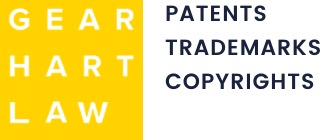If you’ve received a Section 101 rejection from a patent examiner, you’re not alone. These types of rejections are increasingly common, especially in fields involving software or business methods. The good news? A Section 101 rejection doesn’t mean the end of the road. We help inventors understand what’s behind these rejections and how to move forward with a stronger patent application.
What Is a Section 101 Rejection?
Section 101 of the U.S. Patent Act outlines what kinds of inventions are eligible for a patent. According to the statute, an invention must fall into one of four categories:
- A process
- A machine
- A manufacture
- A composition of matter
However, not everything that fits one of those categories is automatically patentable. The courts and the U.S. Patent and Trademark Office (USPTO) have carved out exceptions for things like:
- Laws of nature
- Natural phenomena
- Abstract ideas
If an examiner believes your invention falls into one of those exceptions, they may issue a rejection under Section 101. This can be frustrating, especially if your invention feels very real and technical to you. But it’s something we can address with the right approach.
Common Grounds for Rejection Under Section 101
Most Section 101 rejections cite one of three main issues:
1. Abstract Ideas
These include things like algorithms, data collection methods, or organizing human activity. For example, a method for processing customer data to generate marketing insights might be seen as an abstract idea unless the claims show a technical improvement or inventive concept.
2. Laws of Nature
This covers discoveries that describe how the world works, such as mathematical relationships or naturally occurring biological processes. These aren’t patentable unless the application of the law is new and inventive.
3. Natural Phenomena
Examples include DNA sequences that occur in nature or minerals that haven’t been modified. Simply discovering something in the natural world isn’t enough—you need to show how it’s applied in a unique or practical way.
These categories are often used to reject applications in the tech, biotech, and financial services sectors. But a rejection doesn’t mean your invention lacks value. It may just need to be presented differently.
How We Respond to Section 101 Rejections
When we review a Section 101 rejection, we first take a close look at how the examiner applied the law. Are they claiming your invention is an abstract idea? If so, we apply what’s known as the Alice/Mayo test:
- First, we ask whether the claim is directed to something that’s been excluded from patent protection—like a law of nature, a natural phenomenon, or an abstract idea.
- Then, if it is, we look at whether the claim includes additional elements that turn it into something more—something inventive or practical enough to qualify for a patent.
This two-part framework helps us focus our response and highlight the parts of your invention that matter most to the Patent Office.
Our response might include:
- Clarifying how the invention improves technology or computer functionality
- Emphasizing technical features or problem-solving aspects in the claims
- Citing USPTO guidance or recent legal decisions that support your position
- Making strategic claim amendments to show a practical application
We’ve helped clients reframe their inventions in a way that aligns with current patent office standards—without having to start from scratch.
Strategies That Can Strengthen Your Patent Application
If you’re preparing a new application or revising an existing one, here are some strategies we often recommend:
- Focus on technical improvements: Show how your invention makes a device or process more efficient, reliable, or scalable.
- Be specific in your claims: Vague or overly broad claims are more likely to be rejected.
- Add supporting examples: Real-world use cases or system diagrams can help clarify how your invention works.
- Link the invention to hardware or tangible systems: This can help show that it’s more than just an idea.
By building your application with these points in mind, we can help position your invention as more than just an abstract concept.
Why Working With a Patent Attorney Matters
Section 101 rejections require a thoughtful response. It’s not just about rewriting claims—it’s about presenting your invention in a way the USPTO understands and accepts. We work closely with our clients to craft responses that are grounded in case law, tailored to the invention, and in line with current guidelines. Our job is to make the process easier for you. From the first office action to final approval, we’re here to help you stay on track.
Don’t Let a Section 101 Rejection Stop You
A rejection based on patentable subject matter can feel like a setback, but it’s something we deal with regularly, and we know how to handle it. If you’ve received a Section 101 rejection, let’s talk about how to turn it around.
At Gearhart Law, we help inventors in New Jersey and beyond protect what they’ve created. Contact us today to schedule a consultation.

